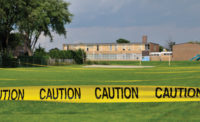For several years I have been attending EHS expos. They generally are kicked off by a rotating group of speakers who have an impressive list of companies and organizations to which they consult on EHS matters. My issue is when, if ever, have they been in the field or in the plant observing day to day activities? Many are academics. I get it, they are mostly consulting on management and organizational issues, but currency in day-to-day production activities would, in my mind, make them more relevant. But that is not the topic of this article.
Who attends EHS events?
Generally, in my observations and discussions, the attendees are from companies that pay their way to and from, along with hotels and meals while there. The benefits are impressive – CEU points for EHS certification holders, attending some cutting-edge presentations and seeing the latest safety technology on the expo floor.
All this sets the stage for WHO IS MISSING?
Small businesses that cannot afford to attend or send employees. Small businesses that probably do not have a safety professional on staff. I would speculate that the many state safety fairs are more likely to get attendance from small companies, but that said, most small guys don’t have the time, resources, specialized person, or compelling reason to attend big ticket trade shows.
The safety skills gap
Driving around in several towns and cities, it is easy to see that construction is booming. Large projects have one or more safety professionals on site and it shows. Then there are small projects, often in the housing industry, where work is being accomplished by small companies and it also shows. One can easily point out several safety issues, some quite serious.
Who is helping these companies? They cannot afford NSC or ASSE; they do not belong to local organizations that sometimes provide safety training. These companies are owned by people without a lot of resources. They are struggling to pay bills and make payroll. Adding a “non-production”’ employee is not on their to-do list. These are the forgotten ones who are invisible to the world of safety. Small contractors with fewer than ten employees are even invisible to OSHA.
Helping the forgotten
We, as safety professionals, have a responsibility to help. While individually we do not have much available time to devote to this important issue, perhaps local or regional safety organizations could justify a joint project devoted to assisting the “forgotten ones.” These groups of highly talented safety professionals should be able to devise a plan that would reach out to the “invisible” companies and offer aid that just might save a life. It’s hard to find a higher calling. I’m just saying…
The thoughts in this article are mine alone and do not reflect the thoughts or ideas of any other organization or individual.


